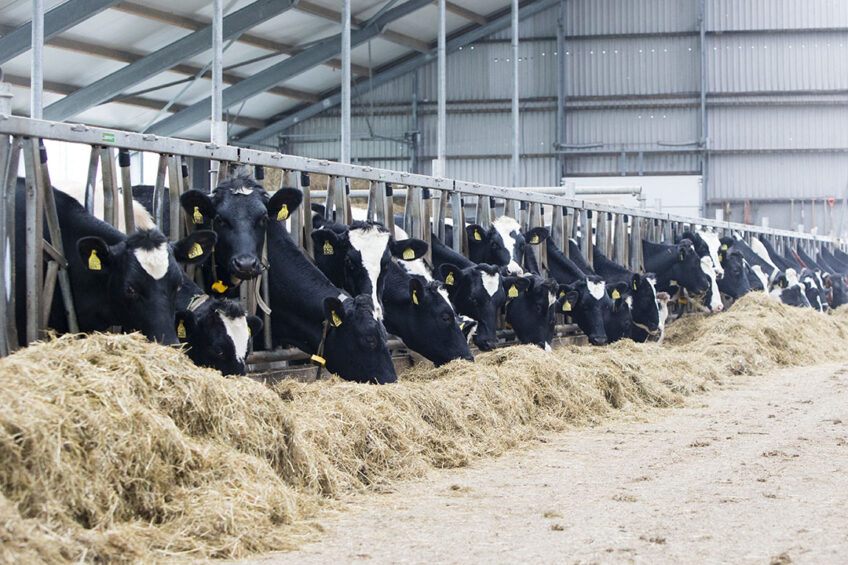Organic trace elements for healthy cows

Cows need trace minerals for a range of functions. Different types of organic trace elements are available on the market. In this article we delve a bit deeper into metal glycinates as a source of trace elements.
For many years, animal diets have been supplemented with essential trace minerals such as copper (Cu), iron (Fe), iodine (I), manganese (Mn), molybdenum (Mo), selenium (Se) and zinc (Zn). The objective of supplementation with trace minerals is to avoid a variety of deficiency diseases. Trace minerals carry out key functions in relation to many metabolic processes, most notably as catalysts for enzymes and hormones, and are essential for optimum health, growth and productivity. Today the question is not if diets need to be supplemented, but which metal source is selected. The market of trace minerals consists of inorganic and organic compounds. Inorganic trace minerals come as sulphates, oxides, carbonates or chlorides. The commercially available organic trace minerals are mainly produced as complexes. In other words, a protective chemical bond between a mineral and an appropriate organic compound (ligand) is made. Different types of organic trace elements are available on the market. For some of them, short-chain peptides and amino acids derived from hydrolysed soy proteins are used as ligands, and others use pure amino acids. Studies have shown that animals absorb, digest and use organic mineral sources better than inorganic ones, resulting in a greater bioavailability. However, within organic sources, large variations may exist. Bioavailability of a metal is influenced by different factors such as interactions with other minerals, dietary components and formation of insoluble non-absorbable complexes in the digestive tract, as well as how efficient its absorption is at the gut level. A high bioavailability will result in a reduction of the minimum supply needed to meet the animal’s requirements, as well as a reduction of mineral excretion.

Technical specifications
The Swiss based company Pancosma produces patented organic trace minerals that are complexed with the amino acid glycine* (hereafter called organic trace minerals). The chemical crystalline structure was fully characterised and gave this range part of its name: 2C for Crystalline Complexes. The choice of glycine as a ligand permits to provide products with a high metal content, and to have the complex bond being still present when products are dissolved in water, mixed into feeds and premixes. These characteristics permit to obtain a product that was shown to be the most stable organic form available on the market. As a consequence, the metal reaches its absorption site along the gut in its organic form. The organic trace mineral products are manufactured in a state-of-the-art facility, using the spouted bed granulation technology. This unique production process is optimised to create superior handling and homogeneity of the products. A fine granulate, without dust is obtained. The products are perfectly free-flowing, have a low risk for caking due to lower surface compared to finer products and have an optimal distribution in premix and feed due to their small and uniform particle size. As the ingredients are solubilised before spraying and no carriers or free-flowing agents are added, the final products are again perfectly water soluble.
Figure 1 – Effect of different zinc sources in zinc absorption in cattle (Spears et al, 2004).

Bioavailability and efficacy scientifically proven
A study led in North Carolina State University focused on the bioavailability of minerals in ruminants (Spears et al. 2004). Results showed that apparent absorption and retention of Zn and liver zinc concentration were higher for steers supplemented with the organic trace minerals** than for animals fed zinc sulphate or another organic source (zinc methionine – Figure 1). Zinc is known to play critical roles in the immune system (Shankar and Prasad, 1998), so using the organic form of zinc could be a good tool to promote a good immune status in ruminants. In another study comparing the organic zinc source to zinc sulphate, North Carolina State University concluded that the organic form had a positive effect on immune parameters (Fry et al. (2009). Among other parameters haptoglobin, an acute phase protein known to increase in case of infection, was analysed in blood during the receiving phase. Starting from day 14, haptoglobin levels were reduced for the animals fed 30 ppm organic zinc compared to the animals fed zinc sulphate (Figure 2). Supplementation with 30 ppm of organic zinc, improves the immune response of cattle and speeded up their recovery, compared to zinc sulphate. Based on these results, supplementation of organic zinc could promote a good immune status of ruminants, minimising the negative impact of infection.
Figure 2 – Plasma haptoglobin levels in steers during receiving phase.

*B-TRAXIM® 2C. ** B-TRAXIM® 2C Zn.
References available upon request.
Join 13,000+ subscribers
Subscribe to our newsletter to stay updated about all the need-to-know content in the dairy sector, two times a week.










